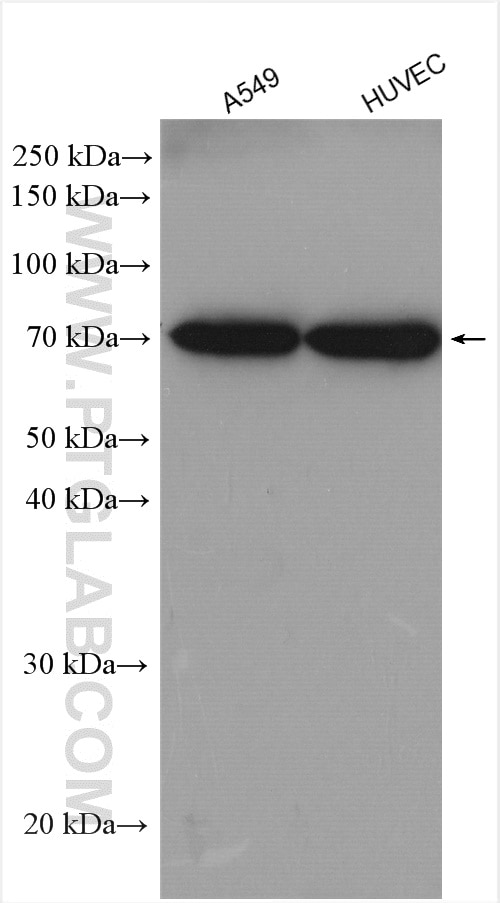ADAM15 Polyclonal antibody
ADAM15 Polyclonal Antibody for WB, ELISA
Host / Isotype
Rabbit / IgG
Reactivity
human
Applications
WB, ELISA
Conjugate
Unconjugated
Cat no : 27124-1-AP
Synonyms
Validation Data Gallery
Tested Applications
| Positive WB detected in | A549 cells, HUVEC cells |
Recommended dilution
| Application | Dilution |
|---|---|
| Western Blot (WB) | WB : 1:500-1:3000 |
| Sample-dependent, check data in validation data gallery | |
Product Information
The immunogen of 27124-1-AP is ADAM15 Fusion Protein expressed in E. coli.
| Tested Reactivity | human |
| Host / Isotype | Rabbit / IgG |
| Class | Polyclonal |
| Type | Antibody |
| Immunogen | ADAM15 fusion protein Ag25947 相同性解析による交差性が予測される生物種 |
| Full Name | ADAM metallopeptidase domain 15 |
| Calculated molecular weight | 93 kDa |
| Observed molecular weight | 70 kDa |
| GenBank accession number | BC014566 |
| Gene symbol | ADAM15 |
| Gene ID (NCBI) | 8751 |
| Conjugate | Unconjugated |
| Form | Liquid |
| Purification Method | Antigen affinity purification |
| Storage Buffer | PBS with 0.02% sodium azide and 50% glycerol pH 7.3. |
| Storage Conditions | Store at -20°C. Stable for one year after shipment. Aliquoting is unnecessary for -20oC storage. |
Background Information
ADAM15, a member of the ADAM (a disintegrin and metalloprotease) family, is a membrane protein containing both protease and adhesion domains and may be involved in tumor invasion and metastasis (PMID:15756594). It is also named as MDC15. ADAM15 is required for the activation of the FAK and Src pathways to generate apoptosis resistance in response to apoptotic signalling or cell stress (PMID: 11741929). ADAM15 is processed during epididymal maturation and acrosome reaction and that it may play a role during sperm-egg binding. Jurkat and testicular cells expresses the precursor ADAM15 of 110 kDa, as well as the ADAM15 processing form, consisting of about 75-85 kDa (PMID:18390692). ADAM15 has some isoforms with the calculated molecular mass of 55~92 kDa.
Protocols
| Product Specific Protocols | |
|---|---|
| WB protocol for ADAM15 antibody 27124-1-AP | Download protocol |
| Standard Protocols | |
|---|---|
| Click here to view our Standard Protocols |


